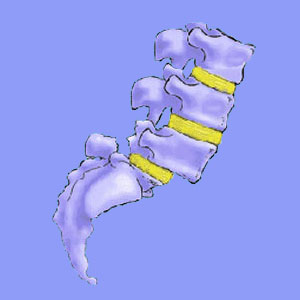
Sciatica from spondylolisthesis is a possible symptomatic result of serious cases of vertebral misalignment, usually in the lumbar spine. Spondylolisthesis can occur due to congenital, developmental, idiopathic or arthritic causes and is generally not a cause for alarm. However, some cases of dire spondylolisthesis can certainly create pain, disability and even spinal instability in their unlucky victims. Sciatica is just one of many painful consequences of vertebral listhesis.
This essay will detail both symptomatic and innocent versions of spondylolisthesis and how the former can cause sciatic nerve symptoms through central canal or foraminal opening misalignment.
What is Spondylolisthesis Sciatica?
Spondylolisthesis is defined as a shift in the normal position of one or more vertebrae. In essence, a vertebral bone moves out of normal position in the spinal column. This skeletal condition is easily diagnosed by any imaging study and can look quite frightening on an x-ray film. However, most minor cases of spondylolisthesis do not present any health issues and most exist completely unknown to the affected person.
In severe spondylolisthesis conditions, the spine can be truly limited in its normal functionality. Nerve tissue can be pinched in between ultra-narrowed foraminal openings and the actual spinal cord can become constricted if the central canal does not line up from level to level. These events can cause sciatica pain and neurological symptoms in some unfortunate patients.
Sciatica from Spondylolisthesis Interventions
There is a wide range of treatments for spondylolisthesis, although most make no sense whatsoever. This is a bone misalignment condition and can not be repaired or resolved with exercise, chiropractic, drugs, TENS or any other symptomatic modality.
Surgery is the only possible solution and that is a very risky endeavor, as it almost always consists of spinal fusion.
Additionally, most mild to moderate cases which are treated with a battery of conservative therapies are not even the actual source of symptoms. In these cases, the spondylolisthesis is only a sciatica scapegoat and not the true symptomatic causation. Remember this if you have been advised on a particular treatment path due to spondylolisthesis-driven back and leg pain.
Sciatica from Spondylolisthesis Synopsis
Grade 1 and 2 spondylolisthesis is rarely the source of pain. Grade 3 and 4 can be a different story altogether. When the percentage of vertebral misalignment reaches over 60%, the stage may be set for dire symptomatic expressions. In truly advanced cases, the entire spinal function may be in jeopardy and surgery may be necessary to stabilize the column of vertebral bones.
Just be incredibly careful with your drastic treatment choices, since surgery, in general, demonstrates horrific curative results for virtually all forms of back pain. Leave it as a last possible resort and exhaust all nonsurgical treatment options first.
If you do decide on surgical intervention, be sure to research your options carefully and always choose a surgeon who specializes in spondylolisthesis correction.
Sciatica > Sciatica Causes > Sciatica from Spondylolisthesis




